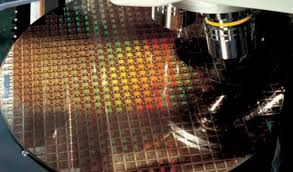
Breaking News
 Harbor Freight Coverpro 12x20 made into a Metal Building part 2
Harbor Freight Coverpro 12x20 made into a Metal Building part 2
 Brian Cole BUSTED, Halle Berry NUKES Newsom + Candace REJECTS TPUSA Challenge...
Brian Cole BUSTED, Halle Berry NUKES Newsom + Candace REJECTS TPUSA Challenge...
 I spent my Thanksgiving in the emergency rom... Medical emergencies can pop up at any time.
I spent my Thanksgiving in the emergency rom... Medical emergencies can pop up at any time.
 The "Golden Age" of Job Layoffs?
The "Golden Age" of Job Layoffs?
Top Tech News
 Build a Greenhouse HEATER that Lasts 10-15 DAYS!
Build a Greenhouse HEATER that Lasts 10-15 DAYS!
 Look at the genius idea he came up with using this tank that nobody wanted
Look at the genius idea he came up with using this tank that nobody wanted
 Latest Comet 3I Atlas Anomolies Like the Impossible 600,000 Mile Long Sunward Tail
Latest Comet 3I Atlas Anomolies Like the Impossible 600,000 Mile Long Sunward Tail
 Tesla Just Opened Its Biggest Supercharger Station Ever--And It's Powered By Solar And Batteries
Tesla Just Opened Its Biggest Supercharger Station Ever--And It's Powered By Solar And Batteries
 Your body already knows how to regrow limbs. We just haven't figured out how to turn it on yet.
Your body already knows how to regrow limbs. We just haven't figured out how to turn it on yet.
 We've wiretapped the gut-brain hotline to decode signals driving disease
We've wiretapped the gut-brain hotline to decode signals driving disease
 3D-printable concrete alternative hardens in three days, not four weeks
3D-printable concrete alternative hardens in three days, not four weeks
 Could satellite-beaming planes and airships make SpaceX's Starlink obsolete?
Could satellite-beaming planes and airships make SpaceX's Starlink obsolete?
Taiwan Semiconductor Will Have Volume Production of 3 Nanometer Chips in 2022

TSMC was the first company to use ASML's EUV lithography machines for high-volume production and now has at least three processes that use EUV for select layers. They use EUV lithography for its N7+, N6, and N5 nodes.
TSMC's 2nd generation 7 nm technology (N7+) uses EUV for up to four layers in order to reduce its use of multi-patterning techniques when building highly complex circuits. The 6 nm process (N6) is for customers to re-use IP designed for 1st generation 7 nm, per the report. TSMC's 5 nm process (N5) can use EUV for up to 14 layers. 5nm has significant increase in transistor density and performance enhancements.
2nd generation 5 nm (N5P) and 4 nm (N4) fabrication processes are based 5 nm technology and will have performance and power benefits. N5P will be available in 2021. N4 chips will have volume production in 2022.
Next-generation 3 nm process (N3) will be a full node improvement over N5. N3 will have 70 percent logic density gain, 15-percent performance gain, and 30-percent power reduction over the 5-nm process. N3 will use EUV over 20 layers.
Nextbigfuture covered Taiwan Semiconductors plans from 2017. TSMC has kept on track with its Moore's Law roadmap to reach 3-nanometer chips by 2022.

 First totally synthetic human brain model has been realized
First totally synthetic human brain model has been realized Mach-23 potato gun to shoot satellites into space
Mach-23 potato gun to shoot satellites into space

